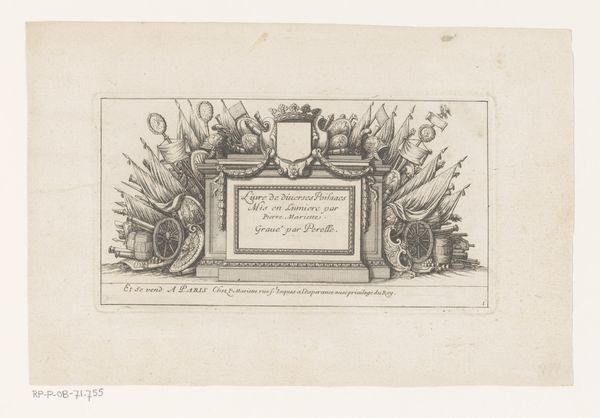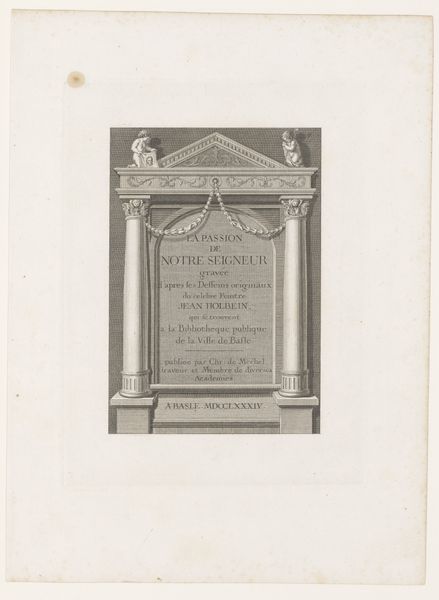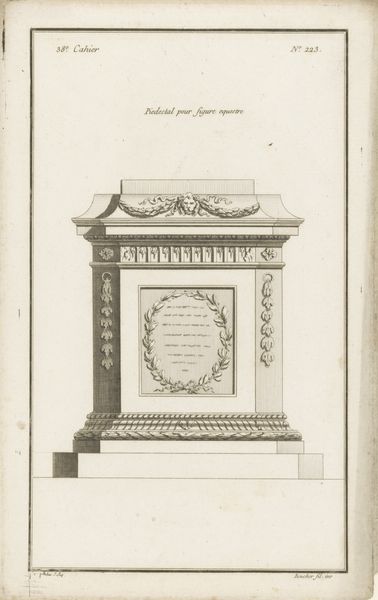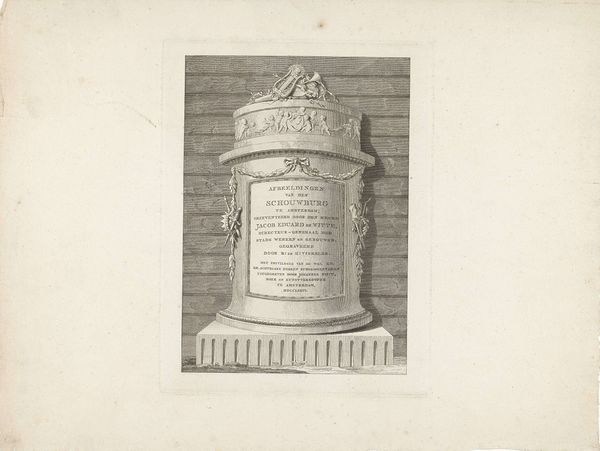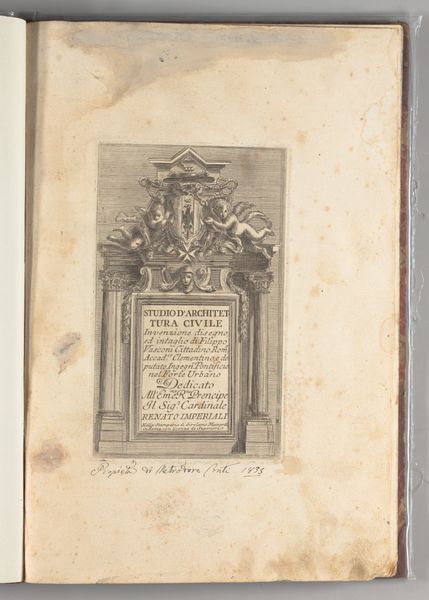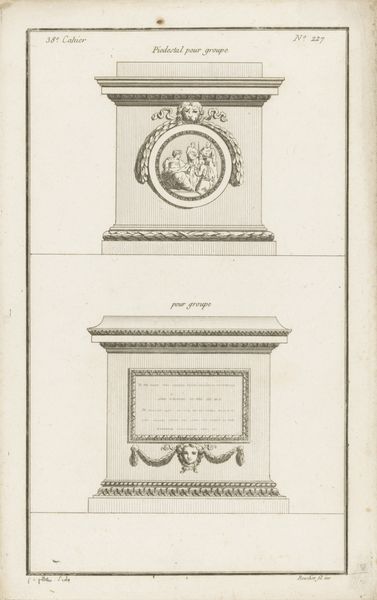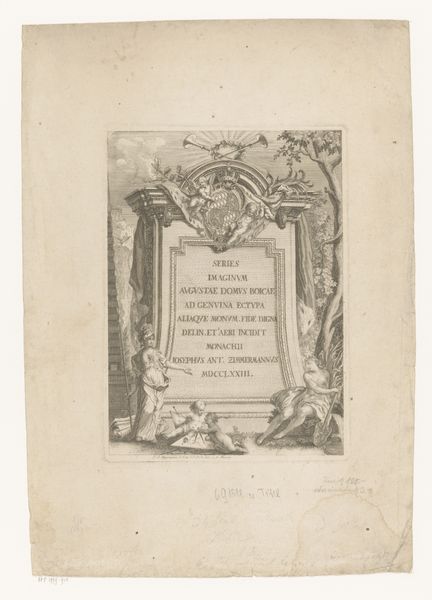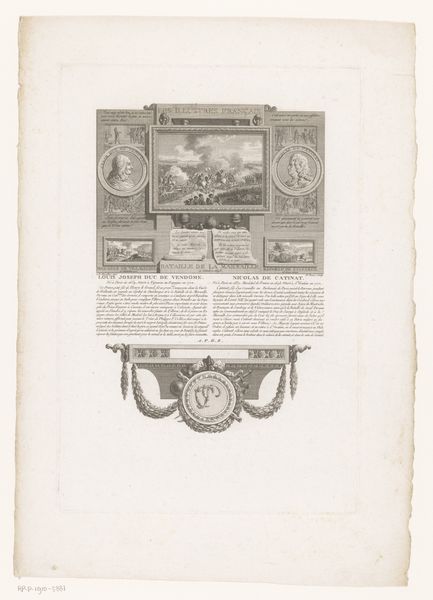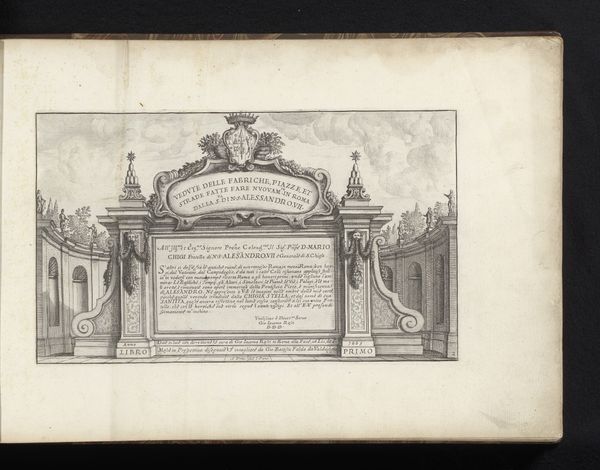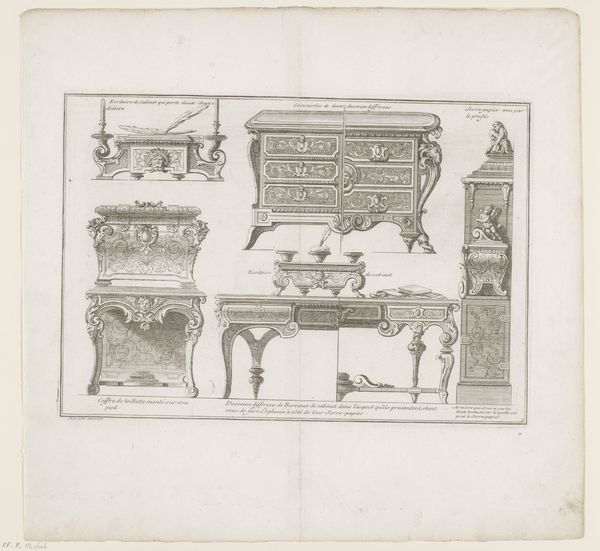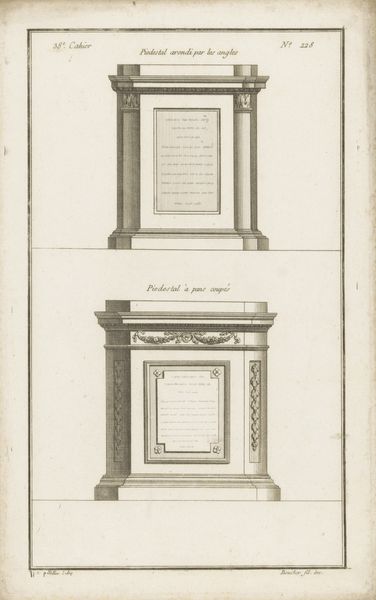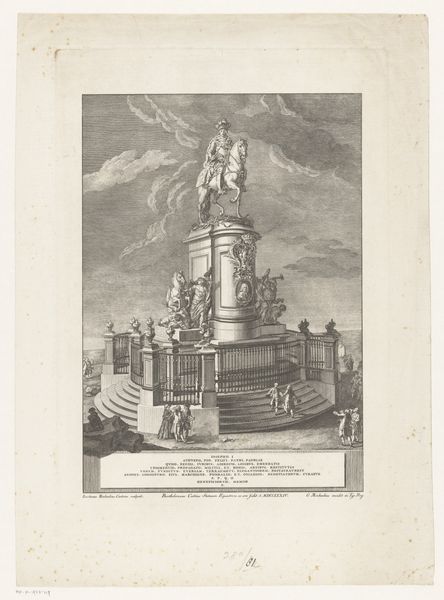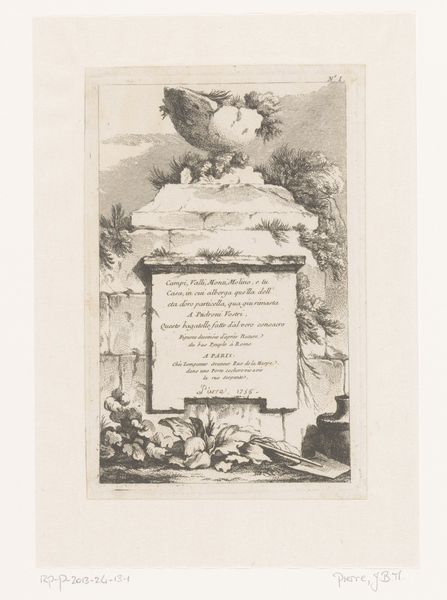
drawing, print, etching, paper, engraving, architecture
#
drawing
#
neoclacissism
#
aged paper
#
toned paper
#
light pencil work
# print
#
etching
#
paper
#
column
#
engraving
#
architecture
#
historical font
#
monochrome
Dimensions: height 271 mm, width 183 mm
Copyright: Rijks Museum: Open Domain
Curator: Editor: So, here we have "Grave monument with columns and oil lamps" by Benigno Bossi, from 1771. It's an etching, engraving, and print on paper. I find the monument depicted imposing despite the delicate lines, almost theatrical in its grandeur. How should we interpret this work? Curator: I am most intrigued by the production of such ephemeral commemorations through printmaking techniques such as etching and engraving, often intended to be circulated, consumed and even disposed of. This particular artwork seems to glorify not an individual, but instead, is “Dedicated to Monchevue le Marquis de Felino Premier Ministre de SAR”. The means by which someone would order a commemorative drawing such as this interests me. What did such forms of production and commissioning mean in 18th-century society? Editor: That’s interesting. So it's less about the person commemorated and more about the socioeconomic structure? Is the choice of etching and engraving significant because of the wider circulation they allowed? Curator: Precisely! The labour involved in the meticulous carving into the plate to produce multiple copies allowed for a democratisation of the monument form. But what social strata would consume and engage with prints like these, do you think? Editor: Maybe an emerging middle class? People who admired the Marquis de Felino but wouldn't necessarily be part of the aristocracy. Curator: A shrewd observation. They were gaining power and desiring access to displays of grandeur previously reserved for the elite. What's fascinating here is how printing techniques enable us to question and challenge traditional social boundaries. Editor: That’s really given me a new way of looking at art and its role in society, it's not only about the subject but also the process! Curator: Agreed. It's a lens through which we examine labour, materiality, and patterns of consumption within historical context.
Comments
No comments
Be the first to comment and join the conversation on the ultimate creative platform.
